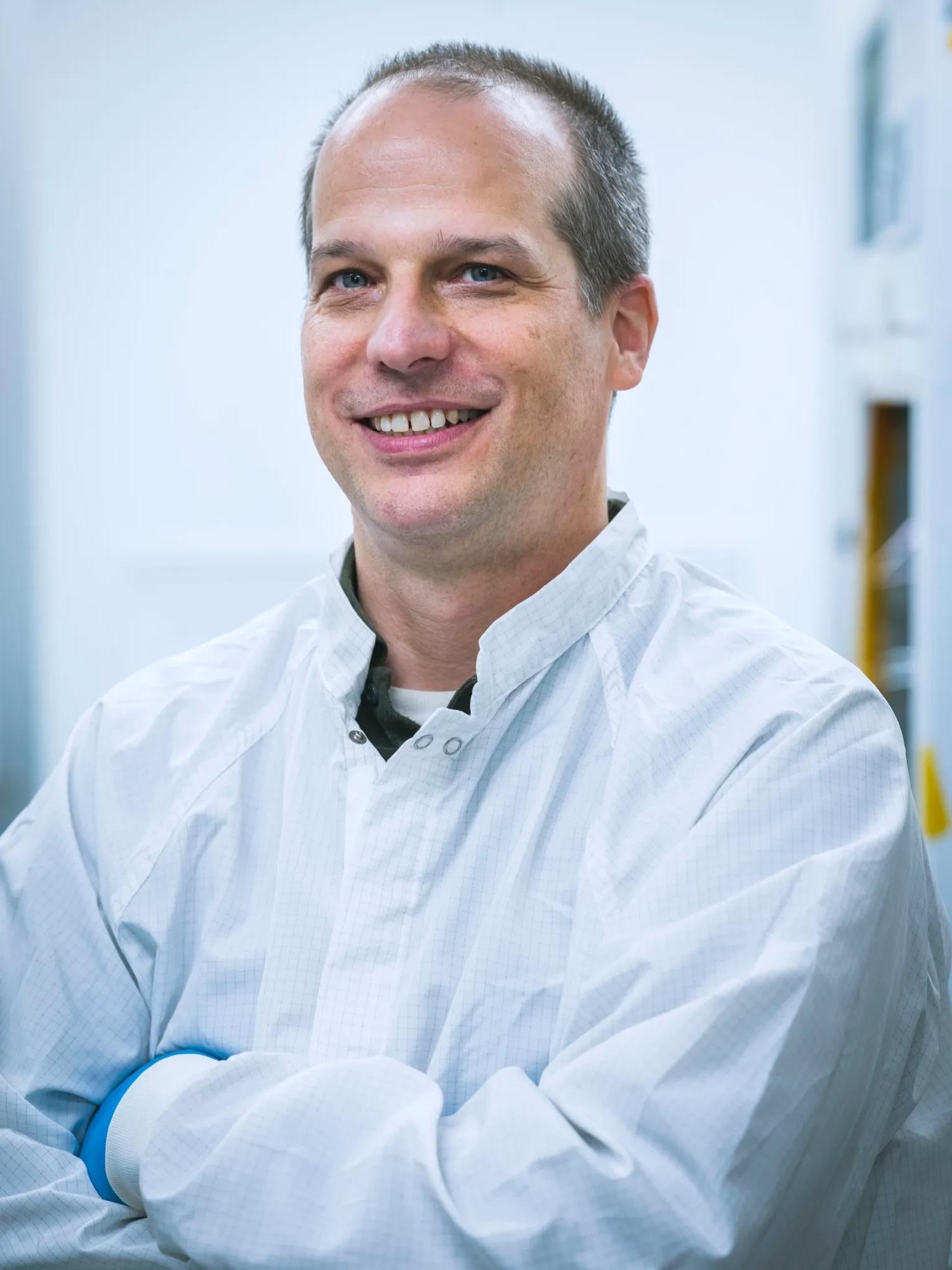Engineer Steven Denis was selected the FY23 Internal Research and Development (IRAD) Innovator of the Year by Goddard’s Office of the Chief Technologist, an honor bestowed yearly on those who exemplify the best in innovation.

Kevin Denis. Image Credit: NASA/Christopher Gunn
Denis showed perseverance and creativity in inventing hair-thin photon sieves to focus extreme ultraviolet light—a difficult wavelength to capture. Thin membranes are important in solar science, he claims, because they transmit up to seven times more light than thicker materials. Denis’ findings will pave the way for more detailed studies of the Sun and an understanding of its impact on Earth and the solar system.
Denis discovered innovative methods for creating broader and thinner silicon and niobium membranes over many years while working closely with solar scientists at Goddard’s IRAD, or the Internal Research and Development program. To prevent tearing, these photon sieves, developed at Goddard’s Detector Development Laboratory, are supported by a honeycomb lattice of thicker silicon.
They refract light similarly to Fresnel lenses used in lighthouses because they are etched with small holes in a circular pattern. The extreme ultraviolet light that passes through this filter is gradually bent inward to a distant receiver.
It is a sheer physical challenge to construct sieves with such precision. Their smallest features are a few microns across. Kevin has really responded to that challenge with very creative solutions.
Dr. Doug Rabin, Deputy SORCE Project Scientist, Goddard Space Flight Center, NASA
Denis’ photon sieves should eventually be able to resolve objects on the Sun’s surface that are 10 to 50 times smaller than what the Solar Dynamics Observatory’s EUV imager can see today, according to Rabin.
Working closely with scientists to remove impediments to advancement in their profession inspires Denis, he stated.
Dr. Rabin added, “With this project in particular, scientists Rabin and Adrian Daw have done a great job using the sieves in near-term science applications while we push the technology for larger and more capable missions.”
Denis’ study was recognized in Physics Today, an American Institute for Physics publication, for its significance in improving crucial technology that can answer unanswered issues about how coronal heating and acceleration occur in the Sun's lower atmosphere.
Denis is submitting a new application for his most recent fabrication process since he has already received two patents for this project.
Denis stated that even though he is still pushing the boundaries of engineering, he is excited to see them utilized in missions that get more sophisticated and competent.
It is a great motivation to see they are going to be used for new science.
Steven Denis, Engineer, Goddard Space Flight Center, NASA
Journal Reference
Gilbert, H., et al. (2023) Advances in solar telescopes. Physics Today. doi.org/10.1063/PT.3.5292